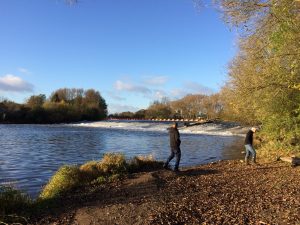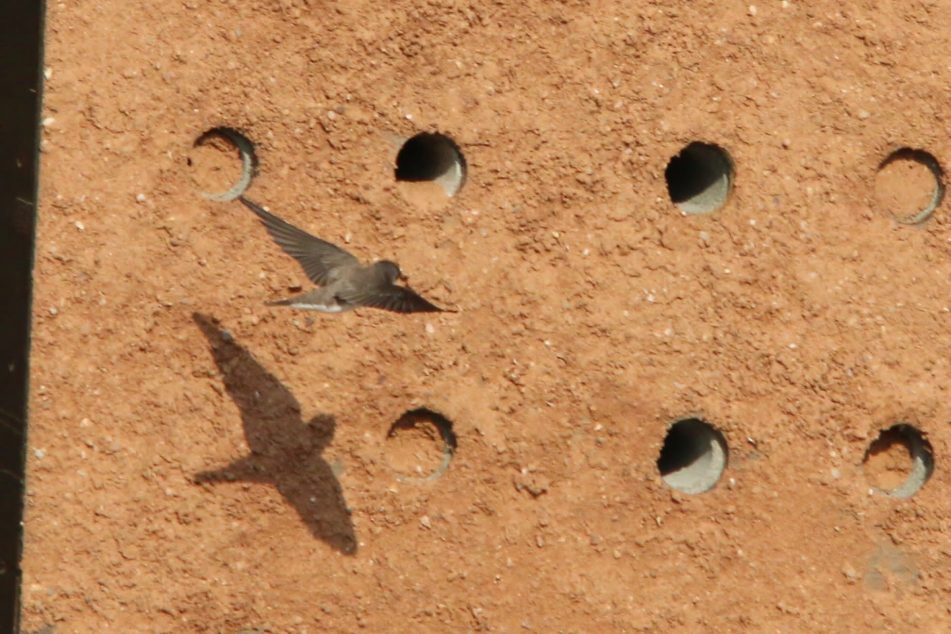
At the start of 2022, a new partnership project began between Canal & River Trust, Malvern and Worcester RSPB and Worcester Environmental Group. The aim of the project? To help the survival of a local colony of sand martins.
The birds were nesting in water outlet pipes in Diglis Oil Basin, Worcester, and during heavy rainfall, their nests would be washed away. So we decided to create a safer home for them along the River Severn.
Planning the perfect perch
Diglis Lock Island was an ideal location for the construction of a sand martin colony box to provide a safer nesting site for this colony of birds.
Essential background research was conducted by volunteers from Malvern and Worcester RSPB, and design phase was headed up by Worcester Environmental Group volunteers. The funding for the project was sourced from the Ecological Improvements for the River Severn Lock Islands budget from the Heritage and Environment Team, Wales & South-West Canal & River Trust.
The construction phase took around 3 months. Despite setbacks and challenges (largely caused by the weather!), the team worked hard, and the box was installed on 18th March.
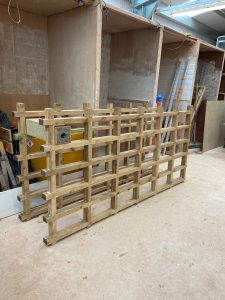
The inside lattice structure, where the nesting boxes sit.
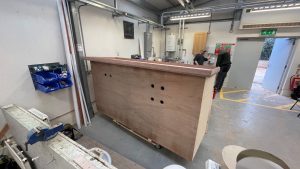
Drilling the holes in the front of the box
Waiting with anticipation…
When building the colony box, we had no idea if our intended residents would take a fancy to their new home. The birds might still prefer their precarious perches in the oil basin.
There was a huge amount of excitement when, a mere 3 weeks later, sand martins were reported in the area. Waterways Environment Apprentice (and sand martin box project manager), Aaron, arrived at Diglis to see a hive of activity on the front of the box. The sand martins had found the box and were definitely interested in the colony box – flying in and out of their new accommodation in a flurry of feathers.


Keeping track of the new arrivals
Over the nesting season, the Malvern and Worcester RSPB conducted several surveys of the nest boxes inside the structure. Amazingly, we recorded a total of 43 chicks which hatched and left the nest. All of these were ringed by a trained volunteer in the RSPB.
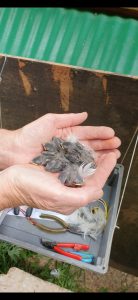
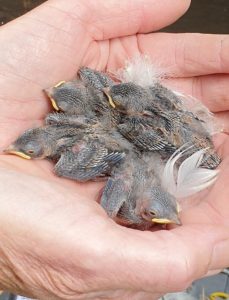
We were amazed to hear that a ringed chick was caught by another ringer down in Lands End, Cornwall. A staggering 338km journey for a bird that was only 1 month old.
A collaborative effort
The sand martin colony box has been a huge success. Aaron and everyone at Canal & River Trust and the Unlocking the Severn project would like to thank the partner groups and their volunteers. Without their time and hard work, this project would not have been possible. In total, volunteers contributed 91 hours to the sand martin box, with amazing efforts in every phase of the project. In particular, the contributions during the construction phase and the monitoring phase were incredible.
Preparing for winter, and 2023…
The box has now been removed from its siting on the eastern bank of Diglis Lock island and stored for winter. This is to protect it from debris that may float down the river, should it flood over winter. We have planned several improvements over the winter that will facilitate the monitoring of the nest boxes nest year and help with reinstalling it on the frame.
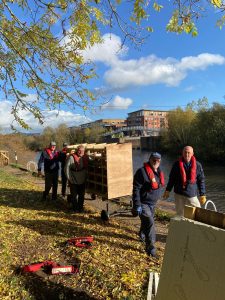
We are hoping that some of the ringed chicks will revisit the box nest year and that the number of chicks will increase year on year!

Written by Aaron Batsman and Corinne Spiller. With photos from Worcester and Malvern RSPB and Unlocking the Severn.


